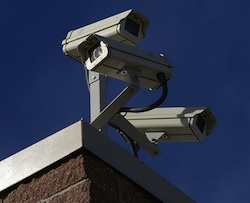U.S. Seeks to Automate Video Analysis

U.S. military and intelligence agencies continue to look for new ways to use artificial intelligence to sift through huge amounts of video imagery in hopes of freeing analysts to identify threats and otherwise put their skills to better use.
The latest AI effort announced last week by the research arm of the U.S. intelligence apparatus focuses on video surveillance and using machine vision to automate video monitoring. The initiative is similar to a Pentagon effort to develop computer vision algorithms to scan full-motion vision.
The new effort unveiled by the Intelligence Advanced Research Projects Activity (IARPA) would focus on public safety applications such as securing government facilities or monitoring public spaces that have become targets for terror attacks.
Program officials said last week they have selected six teams to develop machine vision techniques to scan video under a new program called Deep Intermodal Video Activity, or DIVA. The U.S. National Institute of Standards and Technology along with contractor Kitware Inc., an HPC visualization specialist, will evaluate research data and test proposed DIVA systems, the research agency said.
Among the goals is developing an automated capability to detect threats and, failing that, quickly locating attacks using machine vision and automated video monitoring. "There [are] an increasing number of cases where officials, and the communities they represent, are tasked with viewing large stores of video footage, in an effort to locate perpetrators of attacks, or other threats to public safety," Terry Adams, DIVA program manager, noted in a statement announcing the effort.
"The resulting technology will provide the ability to detect potential threats while reducing the need for manual video monitoring," Adams added.
The agency also stressed that the surveillance technology would not be used to track the identity of individuals and "will be implemented to protect personal privacy." Program officials did not elaborate.
IARPA was established in 2006 to coordinate research across the National Security Agency, CIA and other U.S. spy agencies. The office is modeled after the Defense Advanced Research Projects Agency, which funds risky but promising technology development. Those efforts have focused on the ability to process the enormous video and data haul generated by spy satellites and, increasingly, drones and sensor networks.
Similarly, the Pentagon launched an AI effort last year dubbed Project Maven to accelerate DoD’s integration of big data and machine learning into its intelligence operations. The first computer vision algorithms focused on parsing full-motion video were scheduled for release by the end of 2017.
These and other efforts are aimed at automating the tedious task of pouring through hours of surveillance data to detect threats. Among IARPA's research thrusts is speeding the analysis of sensor data "to maximize insight from the information we collect," the agency said.
Related
George Leopold has written about science and technology for more than 30 years, focusing on electronics and aerospace technology. He previously served as executive editor of Electronic Engineering Times. Leopold is the author of "Calculated Risk: The Supersonic Life and Times of Gus Grissom" (Purdue University Press, 2016).











